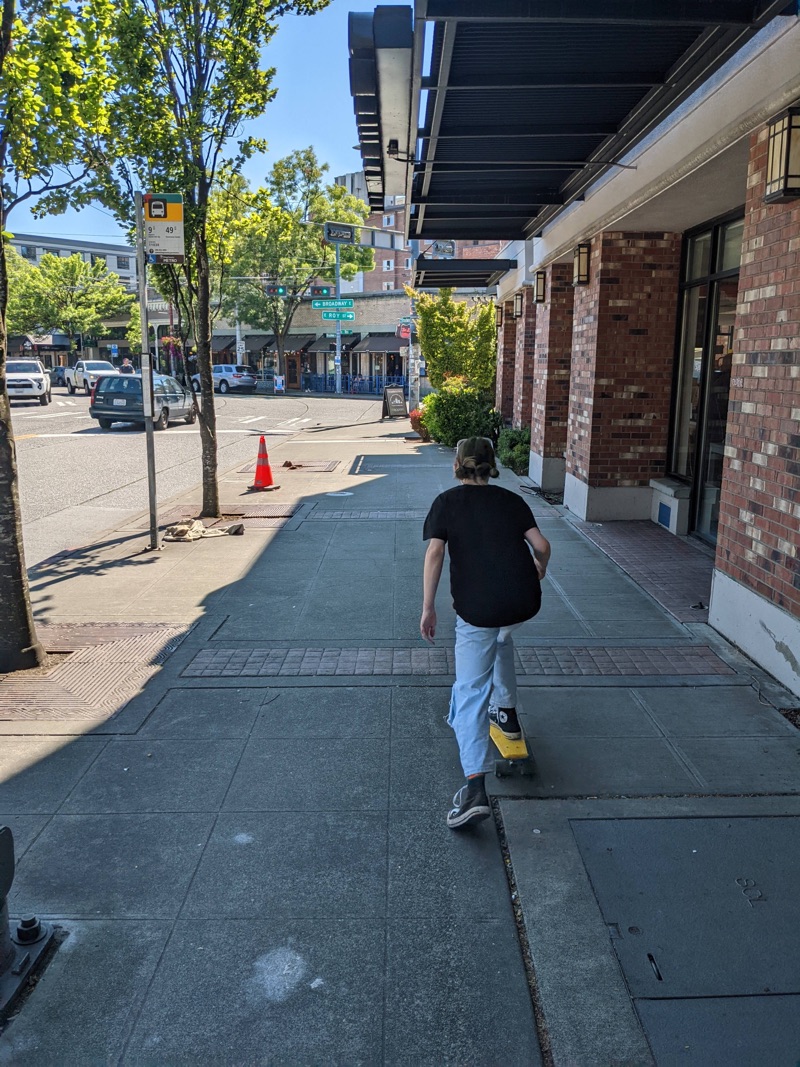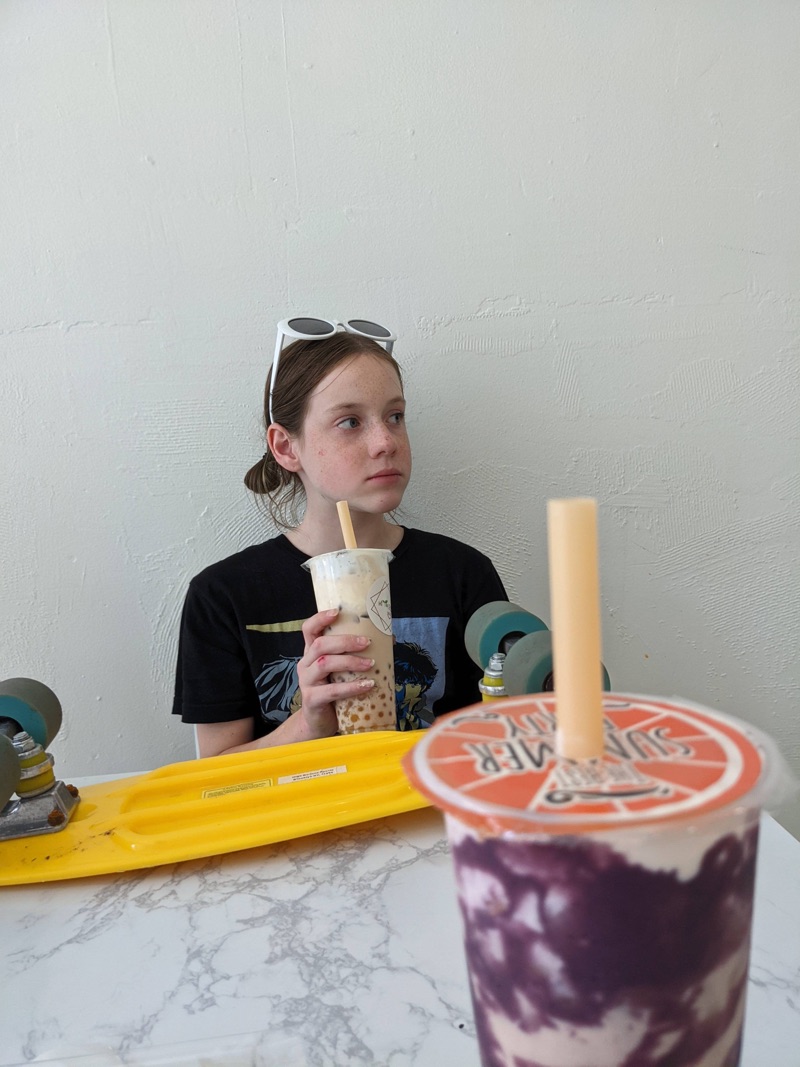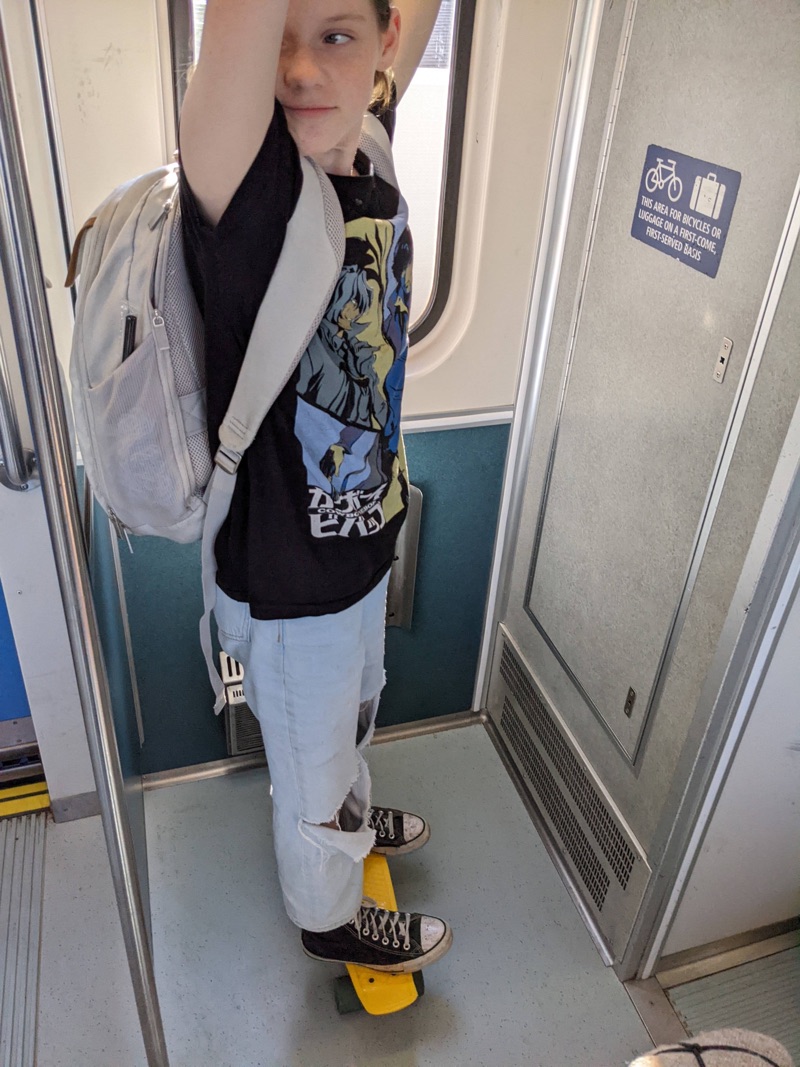2.4 Driving without GPS -- the desire to be free and in control
Expanded consciousness and other benefits of wayfinding
During the course of O’Connor’s research, she visits a Harvard professor of particle physics named John Huth who teaches a course on wayfinding. Huth started teaching the course after nearly becoming lost in fog while kayaking at Cape Cod. He paid close attention to the sounds of waves crashing on shore, the swell, and other details, and he eventually made it back. A couple of months later, another enveloping fog forced him to use wayfinding again. Unfortunately, two young women also kayaking in the area became lost in the same fog and drowned. The experience spooked Huth and he developed an intense interest in wayfinding, wrote a book called The Lost Art of Finding Our Way, and started teaching a course on navigation to his students at Harvard. In the course, he teaches students to pay attention to the direction of the wind, for example.
What students get out of his course, however, isn’t just the ability to navigate a world without GPS. One student said, “This course isn’t about navigation but about a mindful way of living and finding our way and ourselves.” Another said, “To truly understand our surroundings we must immerse ourselves in them,” wrote a third. “We get philosophical about it, how knowing where you are helps you know your place in the world… I find it comforting to be orienting myself. … it forces them to be keenly sensitive to their surroundings. …. The more attuned they are, the more their consciousness seems to expand. In this respect the effect of learning navigation struck me as echoing the discovery of a religious worldview or a transformative life experience: it thins the barriers between ourselves and the world” (qtd. in O’Connor, 225).
These students’ reactions resonated with me because I’d experienced similar sensations while driving without GPS (not a religious experience, but a sense of expanded consciousness). It felt more comforting to be orienting myself, and I sensed that this simple act symbolized something greater and was more philosophical. Driving and knowing where to go, without having to route to a place and receive turn-by-turn directions every step of the way, can change how you view your place in the world.
I wasn’t quite sure what this feeling was, but it was something noticeable. Matthew Crawford explores this topic a bit more in Why We Drive: Toward a Philosophy of the Open Road. At the end of a lot of seemingly disjointed experiences related to driving, Crawford concludes, “To drive is to exercise one’s skill at being free, and one can’t help but feel this when one gets behind the wheel. It seems a skill worth preserving” (314). To drive, especially without the micro directions of GPS, is an experience of freedom, and it is exhilarating.
Because of this view, that driving “is to exercise one’s skill at being free,” Crawford has serious reservations about autonomous vehicles. (He’s also a gearhead who makes engine parts and refits engines into older cars, so there’s that too.) He says algorithms that control driving remove a level of freedom from human drivers, who become passengers routed and carried to locations defined by someone else’s agenda. Crawford says the data that companies collect about us can be used “to herd and nudge our behavior” (287). He singles out Google as a culprit in social engineering because Google controls search results that in turn shape thought. Crawford explains that there’s a concerning trend of people perceiving human action to be incompetent, thereby needing the help of more sophisticated technical algorithms to guide our actions (e.g., to drive for us so we don’t crash). Crawford writes:
The last two decades saw the rise of new currents in the social sciences that emphasize the cognitive incompetence of human beings. The “rational actor” model of human behavior … was deposed by the more psychologically informed school of behavioral economics, which teaches that we need all the help we can get in the form of external “nudges” and cognitive scaffolding if we are to do the rational thing. . . . It is a philosophy that nicely dovetails with the project of enlightened social engineering, and has re-emboldened the authoritarian tendencies of technocratic rule. (291)
In other words, humans make poor decisions on their own, so we rely on computers to help us—so the pro-tech argument goes. Driving along the serpentine maze of streets we’ve built, it does seem that “we need all the help we can get” in the form of GPS guiding our way. We need routing logic to get us to our confusing destinations, taking into account traffic congestion, crashes, or other factors that we can’t see but which the algorithm understands. And given the high number of traffic fatalities, it does seem that humans are flawed drivers; wouldn’t we be better off if computers did the driving?
However, Crawford is suspicious about the agenda of the system performing the automation. “In a far more comprehensive way,” he says, “you are coming to inhabit a world that is tailored to your data-self through a process that is beyond your reach, and designed to serve the interests of whoever owns the algorithm” (287). But even the owners of the algorithm aren’t to blame. He says that there likely isn’t any one person who understands the algorithm’s logic—it’s too complex. “The logic by which an AI reaches its conclusion is usually opaque even to those who built the AI, due to its complexity” (287). With this idea, Crawford’s thinking seems to align with Kevin Kelly in What Technology Wants, suggesting that technology has a trajectory of its own that is set in motion by its nature, independent of any explicit programming. One trajectory of technology is to expand itself, becoming more ubiquitous, multifaceted, integrated, and universally present. Technology is an organism that is squeezing out the dominance of other life.
Hundreds of people across dozens of teams work on major software products. However, ask any individual questions about why or what algorithm drives the logic, and other details, and you’ll quickly find that all these teams are siloed. They understand their stewardship only; almost no one understands the bigger picture.
Pushing back
My act of removing GPS while driving could be seen as a symbolic gesture of removing algorithms influencing my life. Perhaps the renewed sense of control wasn’t about driving, but about taking back control.
It’s summer here in Seattle as I write this, and because my youngest was bouncing off the walls with boredom, we decided to enroll her in a week-long art camp at Gage Academy of Art in Capitol Hill, a district in Seattle. The plan was to drive to Capitol Hill, drop her off, drive over to Fremont (another district in Seattle), work all day, pick her up and drive back to Tukwila for soccer practice, and then drive home. I studied the routes from my house to Gage, from Gage to Fremont, back to Gage, back home, etc. I tried my best to commit them to memory. But as it turned out, reality proved more complicated.
Capitol Hill is, unsurprisingly, on a hill. It’s bounded on the west by I-5, then Eastlake and Lake Union. The presence of the interstate makes navigation tricky because only a couple of roads cross it. Most of the roads are narrow (with cars parked on both sides of the road). They wind around due to the hills, and the district feels old. It took me a couple of days to figure out how significant E Roanake St was as a way to cross I-5. Anyway, despite my best intentions, I had to pull out my smartphone and figure out directions (unless I wanted to wander around all morning).
But the interesting thing was not my routing. It was to learn, after three days of driving, that my daughter preferred to take the light rail instead. She didn’t want to sit there as a passenger while I drove her around. She instead preferred to take the light rail to Capitol Hill station and then skateboard the final mile to Gage. So toward the end of the week, that’s what we did.
As I watched her skate down Capitol Hill’s Broadway street, which runs through the heart of the district’s vibrant countercultural life, it became apparent why she preferred this method: she was in control. She was no longer a restrained passenger, being driven about by Dad. She could choose where she wanted to ride, how fast, which way to lean, etc. (You can see a video of her skateboarding here: https://idbwrtng.com/mollyskateboarding)
From sidewalk to light rail to nearby Boba shop, skateboarding is much more immersive and interactive with the world.




This got me thinking more about modes of travel. Not only was the car insulating her from the world, removing her from more direct interaction with the outside, but with this method, she had more freedom. She could express herself a bit as an individual.
Note that she’s not an experienced skateboarder by any means. She acquired this skateboard as a hand-me-down from an older sister, and there aren’t many places to skate around our house. Suburbia is optimized for driving, not for pedestrians on skateboards. None of the roads are smooth.
O’Connor touches on the need for children to wayfind on their own. Summarizing the work of landscape historian Joe Stilgoe, O’Connor says:
Over the last century, but particularly the last few decades, Stilgoe believes society has circumscribed freedom of movement in America, especially for children. Stilgoe has documented how in the 1890s children and teenagers engaged in national recreations like canoeing, bicycling, and even amateur ballooning or flying with large, tethered kites…. How many teenagers today would be content to walk alone outdoors? … Part of the problem is parents’ incessant management of their children’s time. “I think they’ve missed a kind of self-guided, non-organized activity, nonsports activity growing up. Wandering around, getting into things. … Most of my colleagues I work with seem to have found their careers by being slightly disorganized. Lucking into something, you know.” (292-293)
In other words, children today are increasingly caged up, no longer in control of their lives and able to wander. For physical outlets, we’ve structured them into directed activities like soccer and swim clubs, removing their free time. This helps explain my daughter’s unbridled enthusiasm to be skating down Broadway in Capitol Hill. She had freedom of movement and a place to move about. The sidewalks are smooth, not too crowded, and there are many interesting shops to see.
My daughter’s “self-guided, non-organized activity” seemed to parallel my own desire to untether myself from the structured routing of the GPS app and to move about more according to my own decisions, my own wandering and pathmaking, not be beholden to the gods of time efficiency by always choosing the most direct route to my destination. Sometimes the destination is not the only point of travel.
Touching on autonomous cars, O’Connor says,
… I see potential for a nefarious influence on our lives: the more we rely on driverless cars and their need for three-dimensional maps, the narrower our choices of where we travel and explore could become. As we grow to depend upon, or maybe even just prefer, autonomous vehicles, they will choose the routes we take, and they in turn will choose those routes that are already mapped. Where we go will increasingly be confined by the technology we use (283-84).
In other words, the more we rely on autonomous cars, the more we rely on algorithms to define our paths and routes, reducing our own choices. Untethering from GPS, then, is an assertion of individual will, to choose the routes you want to take rather than routes prescribed by some other entity. Making that decision out of self-will helps stimulate thinking, creativity, and action.
Self-will against the machine
I don’t mean to take this too far, but perhaps in a larger philosophical sense, turning off GPS is a resistance against the modern state’s design towards making us the “Last Man,” as Nietzsche called it. The Last Man, the opposite of the Übermensch (Superman), is one who has become content with meaninglessness, mediocrity, and one who chooses the comfort and security of the social contract (what the state provides in return for your abdication of freedom). He tries to satisfy a deeper discontent by buying commercial goods to numb his emptiness.
The film Fight Club provides a contemporary illustration of Nietzsche’s ideas about the Last Man and the Übermensch. Critic Bob Doyle explains:
He [Ed Norton, the narrator] has been thoroughly emasculated by the egalitarian conformity of postmodern society, which has left him fearful, lazy and entirely mediocre. Nihilism has corrupted his soul to a point where he cannot identify a clear purpose for his existence. His lived experience is an endlessly repeating loop of insignificant events, split between the offices of his employer, business trips and the suffocating comfort of his IKEA furnished apartment. … His attitude is cynical and pessimistic, despite the supposed fulfillment he finds in mindless consumption. Deep down, however, he’s aware that his time is slowly running out and he’s achieving nothing in the process.
The Übermensch [Brad Pitt, playing Tyler Durden] is aware that his life will end in annihilation. So he overcomes the plain will to live and rather embraces the will to power. He shapes his environment through force to create something that will outlast his short existence. But in order to do that, he has to accept enduring pain, suffering and destruction as part of the process.
See this video: “Fight Club & Nietzsche: Overcoming Emasculation” (shortlink: y2u.be/NpxHFNvlUmU).
In contrast to the Last Man, the Übermensch creates meaning for himself or herself. The Übermensch doesn’t need religion or other institutions/algorithms to prescribe meaning but rather gives rise to his or her own values, principles, and ideas. These individual, willful actions might result in a lot of pain and suffering (getting lost, wandering around on one’s own for hours, struggling to decipher the logic of a system), but the actions strengthen one’s own sense of power and purpose, helping overcome, in some probably futile way, the crushing meaninglessness of modern life that manifests itself in the form of a machine telling you where to go but not explaining why.
I have to note that the comparison to the Übermensch feels a bit ridiculous, just as Fight Club seems to be aware of how far-fetched its plot is. I don’t feel like I’m drowning in nihilism with the need to remake the meaning and values of my own world. I’m too old or too desensitized for this. But still, Nietzsche might be right to some degree.
As my daughter and I returned to the light rail station in Tukwila, we needed a ride home. My oldest daughter, finishing up a history degree at UCSB, picked us up. She’s less familiar with the area and so routed the way home. As she drove, I watched as she effortlessly navigated the route, occasionally glancing at the GPS screen that showed her a short distance ahead and the next maneuver to perform. She focused on a discussion about her museum internship and the business of curation, talking me through the issues involved in acquiring artifacts and the process for displaying them. As she talked, she glanced briefly at the map and turned left or right, almost unconsciously. I knew she had little idea about where she was going or why, and I sometimes cringed at the prescribed route. But we did arrive home in good time, and we continued the discussion through dinner.
About Tom Johnson

I'm an API technical writer based in the Seattle area. On this blog, I write about topics related to technical writing and communication — such as software documentation, API documentation, AI, information architecture, content strategy, writing processes, plain language, tech comm careers, and more. Check out my API documentation course if you're looking for more info about documenting APIs. Or see my posts on AI and AI course section for more on the latest in AI and tech comm.
If you're a technical writer and want to keep on top of the latest trends in the tech comm, be sure to subscribe to email updates below. You can also learn more about me or contact me. Finally, note that the opinions I express on my blog are my own points of view, not that of my employer.

